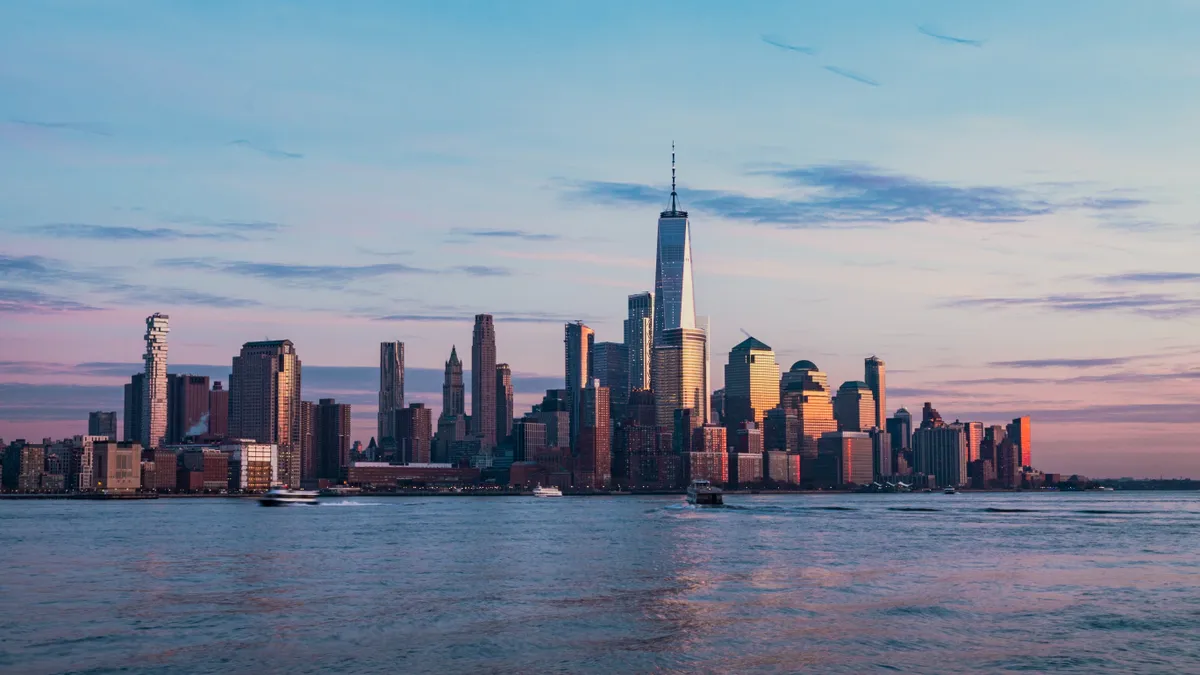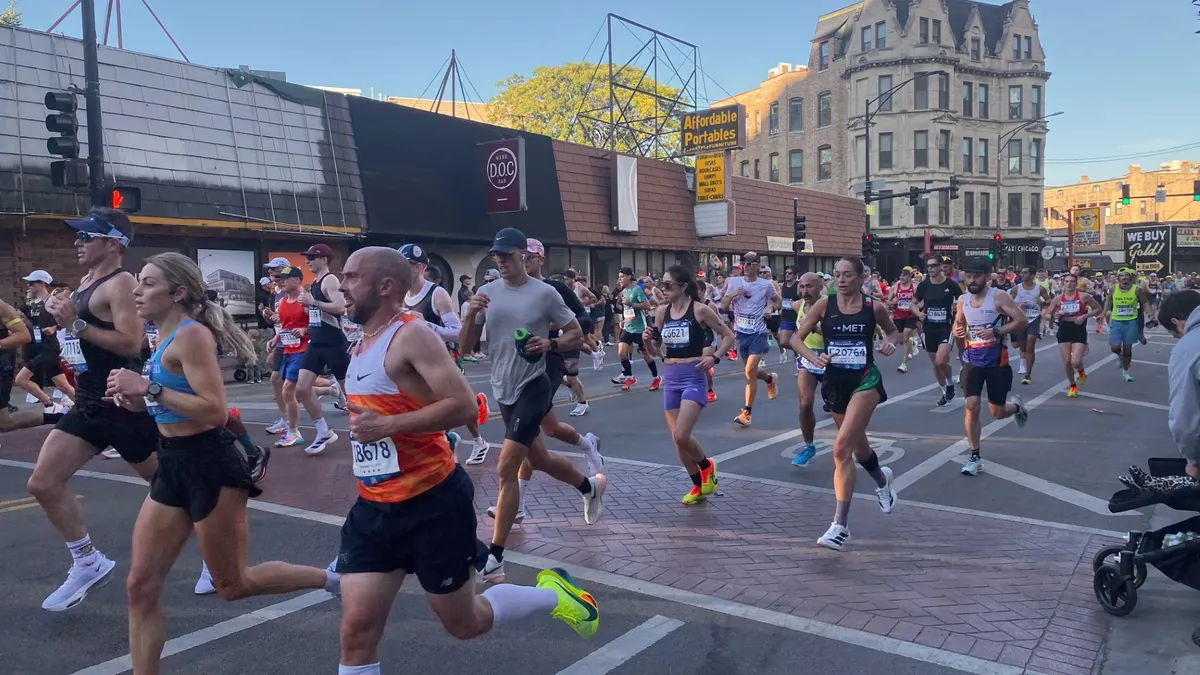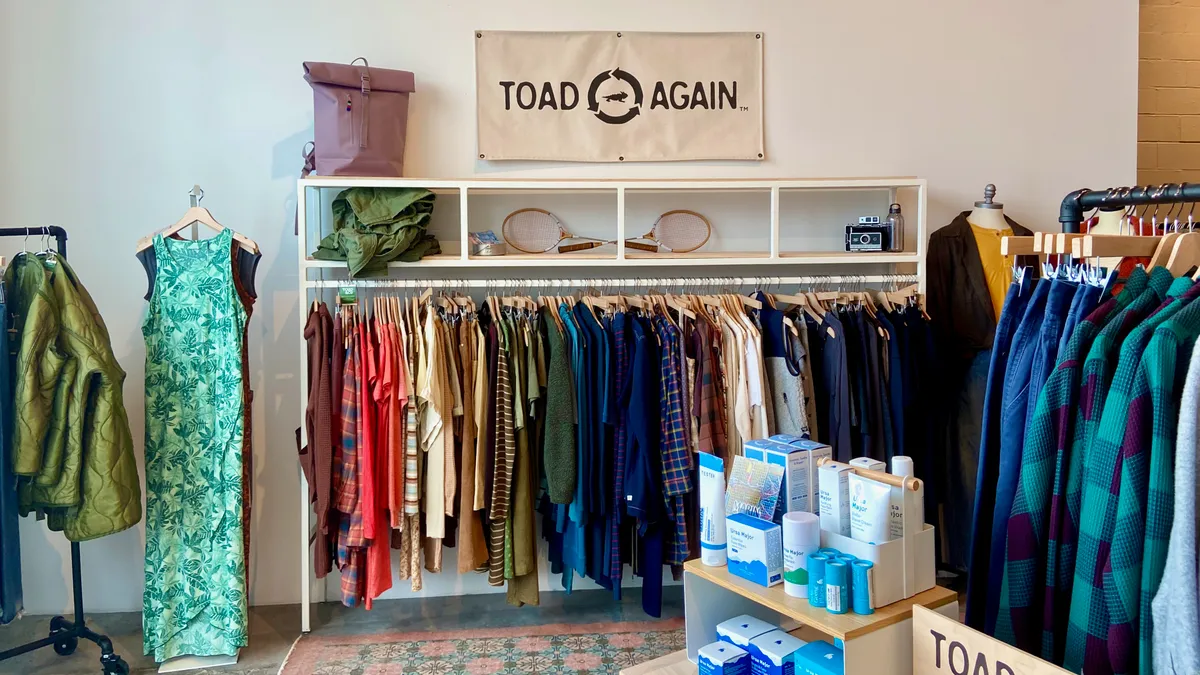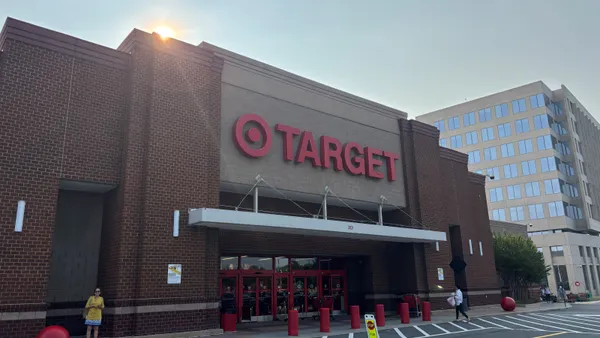An analysis of stores in New York City last year revealed that the number of national chain stores operating in the retail destination had dropped a notable amount. That the entire retail industry is in flux is not a secret, but the drop in one of the countries top retail destinations sparks a larger question: Is the decline of national retail brands in New York City a regional problem, or endemic of a larger retail shift?
In 2019, the number of national chain stores in New York City dropped by 304 locations, representing a 3.7% decrease over the previous year, and the biggest drop in more than 10 years, according to a report published in December by the Center for an Urban Future, a think tank that focuses on economic issues that affect the city. It's also the second year in a row that this number has gone down.
The upshot is that New York City has 7,832 national chain stores now, down from 8,136 in 2018. It's still a large number overall, but in light of the trends buffeting the broader industry, the decline suggests New York could be a microcosm of what is happening to retail across the county.
A change in New York City
"We've been publishing [this] report for 12 years," said Jonathan Bowles, executive director of the Center for an Urban Future. "It tracks national retailers and trends, and in the first ten years we did this, chain stores were increasing. Then a year ago, we saw a modest decline, and this [past] year it was more pronounced."
Bowles said the decline is tied directly to the expansion of online shopping. "For years rents were rising in New York City, and chains were growing," he said. "What's changed is e-commerce. That's led to the downsizing and the closures." Fashion and related markets are feeling the biggest impacts. "It's merchandise retail that's bringing numbers down," Bowles said. "Clothing stores, accessories, shoes, cosmetics. All sorts of merchandise that people are choosing to purchase online. That's the biggest issue."
Michael O'Neill, executive managing director of retail services at Cushman & Wakefield, a commercial real estate firm, said that one of the biggest shifts has been in regards to the number of doors a national retail brand feels it needs. "Look at Gap in 1998," said O'Neill. "They had 40 stores in New York City, with 20 to 25 in Manhattan alone. They had multiple stores in some neighborhoods. If you look at the way people shop today, that's just not necessary. If Gap were starting today, they might see a 7 to 10 store market in Manhattan."
Rents are adjusting to accommodate the shift. "The fundamentals of retail are changing," said Meghann Martindale, global head of retail research at commercial real estate firm CBRE. "Retail is being redefined, and part of the equation in New York is the rent. We have demand for retailers wanting to be in here, but in New York City, Hong Kong, London, and elsewhere, we're seeing a rent correction. Retailers used to pay oversized rents for oversized spaces, and I don't think they're willing to do that anymore. So we're seeing rents come down, and depending on where you are, we'll see rents continue to come down."
O'Neill said that lease flexibility is also in play, which may affect the commercial real estate landscape for years to come. "Generally speaking, there has been a reduction in initial lease term compared to five years ago," said O'Neill. "Part of what’s happened is that there's a continued push from retailers to have greater flexibility, and as the market has softened, this has been achievable."
Landlords are also more open to different kinds of property usage. "People are adjusting their concepts for how they view spaces," said Corey Shuster, a realtor at Douglas Elliman Real Estate on the Maglio, Shuster, and Zisholtz commercial team. "We rep a property on West Broadway that might become a hotel property or a coworking property. Maybe [landlords] will turn a vacant property into an experiential store. The Samsung store in the Meatpacking District is currently an experiential space, and barely sells any product."
The general retail impact
New York City isn't the only place where retail is in a state of flux. "It's a broader issue that we're seeing in all of our retail corridors," said Martindale. "We're seeing a lot of retailers that have struggled with omnichannel, and those stores are struggling nationwide."
Michael Brown is a partner in the consumer and retail practice of global strategy and management consulting firm Kearney (previously A.T. Kearney), and author of the report "The Future of Shopping Centers," said that New York City was just another example of the larger impact of this digital shift. "The forces driving the decline in retail stores in New York City are the same as what's driving that decline elsewhere in the country," he said "It's people moving online for their shopping."
Brown said that this change has made retail stores less profitable, and created fragmentation across the retail sector. In addition, explained Brown, digitally native startups are attracting market share, and legacy chains are reducing the number of stores they have. "From 2015 to 2020, online stores have grown from 8 to 12% of retail," said Brown. "It's a tipping point of profitability. And in the fashion apparel and accessories sector, it's 30%. It's causing [brick and mortar] stores to become less profitable."
O'Neill said that digital isn't the only factor at play, however. "[There has been] an increased impact of private equity that pushed for growth among retail brands," he said "A clear way for brands to grow is to open stores. So you've seen some examples of store growth pushed to the point that's been uncomfortable for certain brands."
Brown agreed that some of this adjustment is more of a correction than a precipitous downturn. "In the U.S., there are 23 square feet of retail per capita, while Europe has only four," he said. "But that's starting to work itself out. The way consumers shop has changed. If you had two malls, you had to be in both malls, because the consumer only knew what they wanted to buy by going to the mall. Now, consumers know what they want to buy, and they know which store has the item to begin with."
Consumers have also changed their ideas about whether they want to buy at all. "There's also the rise of different channels of sales," continued Brown. "There's rentals and resellers and person-to-person sales, and changing shopping behaviors. The new generations don't want stuff the way previous generations did. Smaller houses need a smaller number of home goods; college debt is a factor; and the casualization of the workforce and social events means we don’t need three wardrobes."
More closures to come
Bowles suggested that there will be further changes to come in terms of closures and consolidations. "This [decline] has accelerated over the past year," he said. "That we’re seeing declines in chains even in a strong economy leads me to believe that this will continue. I don't think we know how big this is going to be, but we do know it's going to continue." He said that he expected the closures to impact other retail avenues as well.
"Whereas a lot of clothing stores and shoe stores and office supply stores have been already been affected, we might see a pullback in banks moving forward," he said. "We're not quite there with people adopting e-wallets and mobile banking, but that is accelerating, as well with Apple Pay, and depositing checks with their phones." Bowles also said drug stores might be affected. "There's been an expansion there, and that's slowed down a bit," he said. "The adoption of prescription delivery isn't yet where clothing is, but it might get there soon, and that will affect pharmacies."
Brown added that food operations, as well as personal care, such as nail salons, may also begin to feel pressure to close doors as delivery services increase and self-care services move in-home. "And as home fitness becomes more engaging, fitness centers will be in play as the next place where we may start to see change," he said.
The good news
On the plus side, some brick and mortar sectors are thriving. "Luxury is still doing well, although it was a slightly off this Christmas," said Brown. "Also, Walmart and Target are doing quite well. They’re figuring out the formula they need to integrate their digital channels." He also said that beauty brands such as Sephora and Ulta are also doing well, based on their ability to provide customers with a satisfying in-store experience, unlike ailing department stores. "If you look at what's happened to department stores over the last 30 years, big-box category killers took the toys, and Bed Bath and Beyond took away home," he said. "One of their last safe havens was cosmetics, and now Sephora and Ulta are offering an alterative."
Brown also highlighted the success of off-price brands, both for their affordability and for how much they demand an in-store experience. "T.J. Maxx and Burlington have limited need for online because they're about the [in-store] treasure hunt," he said.
Digitally native brands are also helping to fill store vacancies, which has helped to offset some of the real estate losses. "There's no better way to get customer data than in person," said Shuster. "And data is like the new oil. In-person shopping is the best way to connect with your user base, and retailers are using stores to get additional customer knowledge." He also noted that brands including Lululemon, Target, and Bath and Body Works have thrived in the new omnichannel marketplace.
Looking ahead
The decline, said Brown, is not yet over. "Our estimates are that it will be five years until we reach equilibrium, and until then there will be more closures than openings," he said. "Some retailers with footprints of 1200 to 1500 stores [nationally] will reduce to 500 stores, and online incubators will take up space, and open as many as 300 brick and mortars [nationally]."
O'Neill agreed, and said that in particular, fashion would likely be permanently downsizing. "I don't know that you will see any more 1000-plus apparel chains in the U.S.," he said, adding that aside from convenience-oriented companies like drugstores and banks, he didn't see many brands that would be able to handle that kind of footprint. "I think that will be the new reality," he said. "There's going to be a higher level focus on developing real estate strategies that result in fewer stores in aggregate, but a higher focus on the most important markets and the most important locations within those market. Where you'll see the real fallout is the B and C shopping centers, and the secondary and tertiary markets across the country."
Brands that do hope to survive will need to become more experiential in order to attract shoppers to stores. "We see heritage food providers merging into hotels," said Shuster. "And Armani announced they're building residences above their store on Madison Avenue. And you have all these branded restaurants like the Polo Bar, and ABC Kitchen. Cipriani is also doing a club, and people love the TWA Hotel, and the Tiffany Blue Box Café. People love magic in shopping, and I think the magic is the experience."
Bowles also saw opportunities. "I'm not ready to write off retail space across the city," he said. "There's a strong future. This could mean a lot of empty store fronts, or it could mean an opportunity for other kinds of retailers to come in. It may mean landlords reducing their expectations on rent, or thinking about independent retailers."
In some ways, said Bowles, densely retailed areas such as New York City might be more resilient than more suburban centers. "This might be happening on a lighter scale in New York City than it is nationally," he said. "We've seen malls going empty, and big box stores closing in other parts of the country. But New York City has a diverse retail mix that gives us an advantage." He said that as rents adjust, there may even be room for some of the store that were initially pushed out. "Maybe things that struggled will even come back," he said. "We've already seen a comeback in independent bookstores."
Correction: An earlier version of this story misspelled Corey Shuster's name. Retail Dive regrets the error.























